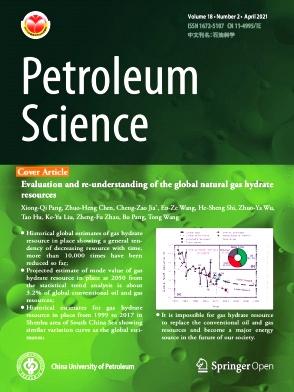Experimental investigation of hybrid enhanced oil recovery techniques for Ugnu Heavy Oil on Alaska North Slope
IF 6
1区 工程技术
Q2 ENERGY & FUELS
引用次数: 0
Abstract
The Alaska North Slope (ANS) is endowed with a substantial reservoir of heavy oil, estimated at 12–18 billion barrels, primarily concentrated within the Ugnu reservoirs. These deposits, situated at depths ranging from 2000 to 4000 feet, lie in close proximity to the permafrost and have undergone biodegradation, resulting in in-situ viscosities reaching thousands of centipoise. Following the success in recovering the somewhat less heavy, viscous oils through polymer injection, the deposits in Ugnu Formation are garnering significant interest. Although thermal recovery methods are commonplace for heavy oils, applying these methods on ANS is impractical, given the adjacency to continuous permafrost. Therefore, non-thermal hybrid enhanced oil recovery (cEOR) methods, such as solvent (e.g., CO2) and low salinity water (LSW), or LSW and polymer-based techniques, emerge as the primarily feasible options for recovering these vast heavy oil resources. This study experimentally investigates, via systematically carried out fluid property and phase behavior tests and a series of sand-pack coreflood experiments, the potential to enhance the recovery of Ugnu heavy oils. The coreflood experiments reveal the synergistic effect of combining liquid-CO2 with LSW to be the most promising approach in this study as a water alternating gas (WAG) process results in the cumulative recovery factor of 83.5%, doubling the recovery obtained by continuous low salinity waterflood. Additionally, the liquid-CO2-LSW WAG process demonstrated an additional benefit for CO2 storage, with about 25% of the pore volume of the liquid-CO2 injected being sequestered at the end of the injection process. This significant recovery improvement is attributed to a substantial reduction of oil viscosity upon contact with the liquid CO2 during the soaking period, with a reduction of up to 95% of the original oil viscosity. Meanwhile, in-situ emulsion generation was observed in the oil produced from the continuous LSW flooding. This was also evident by the increased differential pressure across the sand-pack compared to that of the liquid-CO2 alternating LSW process. The promising results of this study indicate significant potential for liquid-CO2 alternating LSW injection as an effective cEOR technique for Ugnu heavy oils.
求助全文
约1分钟内获得全文
求助全文
来源期刊

Petroleum Science
地学-地球化学与地球物理
CiteScore
7.70
自引率
16.10%
发文量
311
审稿时长
63 days
期刊介绍:
Petroleum Science is the only English journal in China on petroleum science and technology that is intended for professionals engaged in petroleum science research and technical applications all over the world, as well as the managerial personnel of oil companies. It covers petroleum geology, petroleum geophysics, petroleum engineering, petrochemistry & chemical engineering, petroleum mechanics, and economic management. It aims to introduce the latest results in oil industry research in China, promote cooperation in petroleum science research between China and the rest of the world, and build a bridge for scientific communication between China and the world.
 求助内容:
求助内容: 应助结果提醒方式:
应助结果提醒方式:


